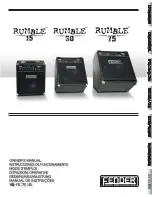
Correlation between mass per unit area and coating thickness
Mass per unit area and geometric coating thickness
FISCHERSCOPE
®
X-RAY
89
coating thickness if the measurement application that is used in
process 1 uses a lower density for converting the mass per unit
area into coating thickness according to equation 1 than the one of
process 2. Otherwise, the measurement result would not
correspond to that of a method that measures the geometric
thickness directly.
Figure: Illustration of the
density issue
Although the linear
expansion of the two
coatings is the same, the
density (and with it the
mass per unit area) of
process 1 (left) is signifi-
cantly lower than that of
process 2 (right).
In practical applications, this issue often becomes apparent and is
the cause of deviating results between supplier and customer. This
is most often the case if the coating contains elements other than
the main element and the instrument or measurement application
does not or can not measure these elements. In such cases, the
density must be lower than the one that was to be used if only the
main element was present.
Examples:
1. Precious metal coatings, e.g., gold:
Here, instead of the density of pure gold of 19.3 g/cm³ found in
tables, a density of, for example, 17.5 g/cm³ as stated by the
manufacturer of the gold bath or as agreed upon between the
parties is used.
The reason for this is that the bath contains elements or
compounds (e.g., cyanide) that are included in the coating but not
visible in the X-ray fluorescence spectrum. However, the used
density should be provided in the supply documents and should be
part of the specifications; after all, it determines or not the products
meet the supply specifications.
2. Hard material coating, e.g., TiN or TiC:
Here, C or N is incorporated in the coating but remains invisible in
the fluorescence spectrum. The (effective) density can be
determined according to the method of comparison with a cross cut
as mentioned above.
All stored density values within the measurement application of
WinFTM are values taken from tables (source: Periodic Table of
Elements, Heräus GmbH/Hanau, Reference 5C 3.81\N Ko).
However, they can be changed by the user.
Summary of Contents for FISCHERSCOPE X-RAY 5000 Series
Page 22: ...22 FISCHERSCOPE X RAY Performing Manual Measurements Deleting Measurement Readings...
Page 36: ...36 FISCHERSCOPE X RAY User Interface of the WinFTM Software The Spectrum Window...
Page 40: ...40 FISCHERSCOPE X RAY WinFTM File Structure Product...
Page 118: ...118 FISCHERSCOPE X RAY Def MA Display the Measurement Mode...
Page 124: ...124 FISCHERSCOPE X RAY Calibration...
Page 142: ...142 FISCHERSCOPE X RAY Addendum Periodic Table of the Elements with X Ray Properties...
Page 156: ...156 FISCHERSCOPE X RAY Addendum Assignment of the Electrical Connections...
Page 183: ...WinFTM 183...
















































